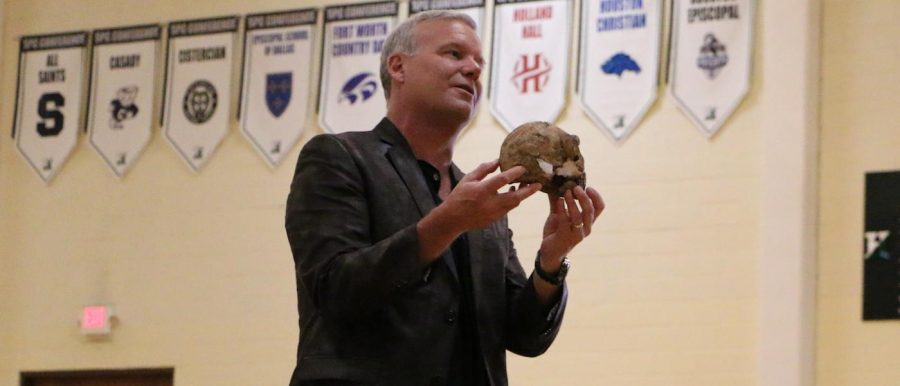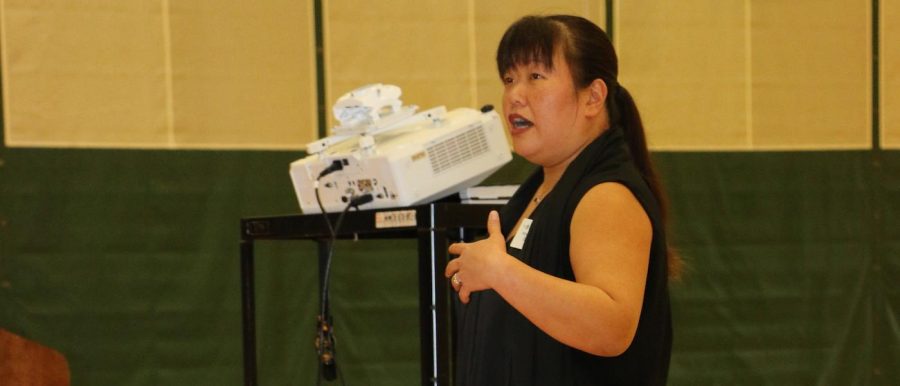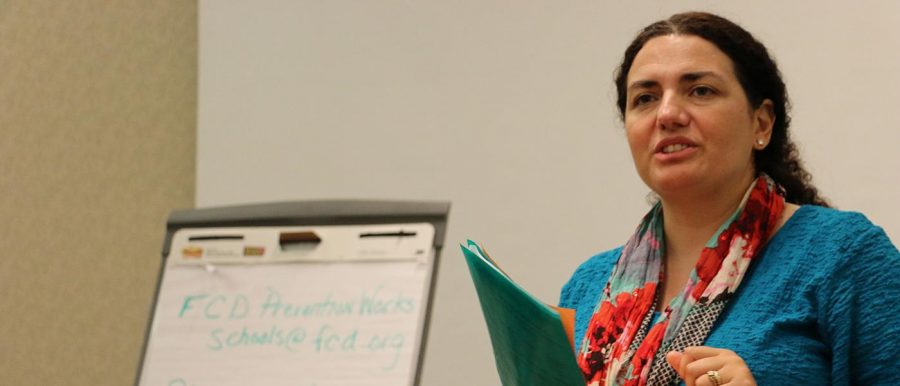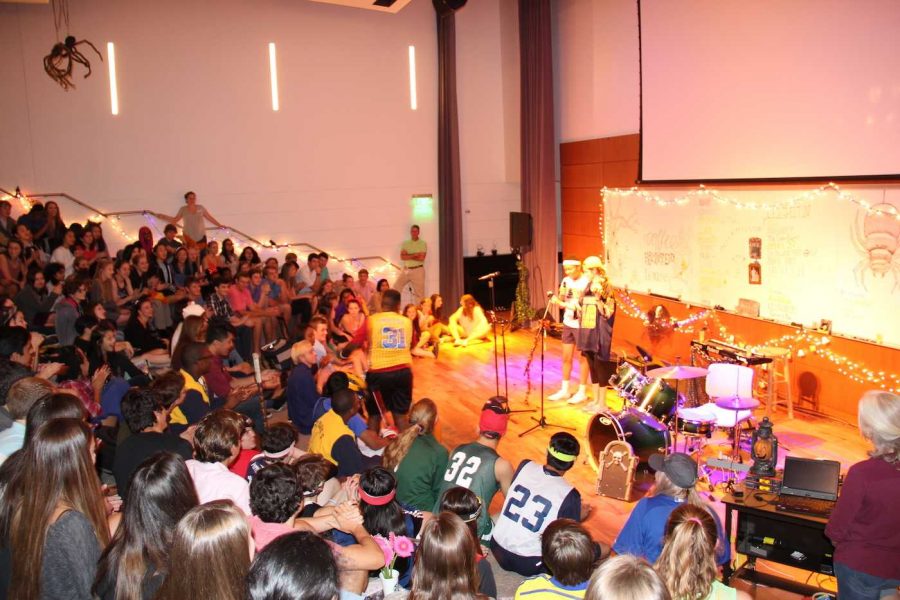World renowned anthropologist, Lee Berger, shared his findings from the Rising Star exploration with the Hockaday School on Sept. 29, 2015.
Hockaday was the first high school Berger spoke to since his headline-grabbing excavation of 1,550 nearly-complete specimens of Homo naledi, a humanoid ancestor.
With Lee Berger and his colleagues sitting front and center, a film crew scanning the room, and Lyda Hill, class of 1960, conversing with trustees, the entire Upper School knew today would be an iconic day. Excitement began on Nov. 16 of 2014 when Berger spoke at an optional Y period assembly, many students awaited his arrival.
Because his findings were not solidified last year, he primarily shared his excavation experiences with the group. “I loved the presentation last year, but he left us wanting more,” Sophomore Ritika Dendi said.
On his return, many Hockadaisies were eager to hear his presentation.
Sophomore Camryn Dixon said. “I follow him on Facebook and his son on Instagram and Snapchat,” Sophomore Camryn Dixon said, “I have been a fangirl for months.”
However, today, Berger was an open book.
In late September of 2013, Berger had received information about fossil deposits in the Dinaledi Chamber, also called the Rising Star Cave, an underground cave system just 20 miles from Johannesburg, South Africa, that comprised of several narrow, dangerous tunnels and was extremely difficult to navigate through.
In order to find the fossils, Berger had to assemble a team of scientists skinny enough to fit through seven-inch-wide tunnels in the cave system without getting claustrophobia, who also happened to have a Ph.D. in archeology, forensics, or anthropology, a good attitude, and a willingness to risk their life exploring.
How could he find these specific professionals around the world? Naturally, he sent a Facebook advertisement.
Check out this announcement from Lee Berger – interesting opportunity!
Dear Colleagues – I need the help of the whole…
Posted by American Association of Physical Anthropologists on Sunday, October 6, 2013
Berger received over 60 eligible applications within 10 days. Fittingly, 80 percent were women. He finally selected the six most qualified applicants, who, with no idea of the assignment or what they would find, set off with Berger to South Africa.
Working with this six-member team of extraordinary scientists and local cave-goers, Berger developed a route to navigate through the complicated tunnels in the cave system.Within a week of the project, they discovered more human relative fossils than ever before in history, in one square meter, 10 inches deep.
After Berger’s team eliminated 60 different possibilities as to why all the remains were found together, Rising Star marked the discovery of a ritual disposal of the dead, by any species beyond human.
– Emily Fuller – Video Editor – and – Mary Claire Wilson – Sports and Health Editor –




















